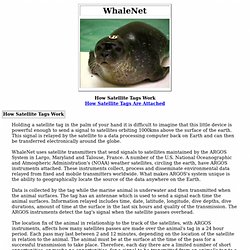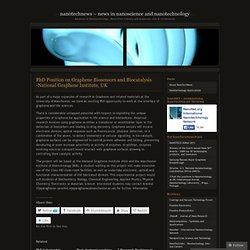

Richard Feynman Nanotechnology Lecture. Feynman 1984 talk on Tiny Machines on You Tube. ‘Nanobridge’ weighs molecules one by one. CALTECH (US) — A new mechanical device is able to measure the mass of individual molecules one at a time.

Researchers say the new technology will eventually help doctors diagnose diseases, enable biologists to study viruses, probe the molecular machinery of cells, and even allow scientists to better measure nanoparticles and air pollution. Described in the journal Nature Nanotechnology, the device—which is only a couple millionths of a meter in size—consists of a tiny, vibrating bridge-like structure. When a particle or molecule lands on the bridge, its mass changes the oscillating frequency in a way that reveals how much the particle weighs.
“As each particle comes in, we can measure its mass,” says Michael Roukes, professor of physics, applied physics, and bioengineering at California Institute of Technology (Caltech). “Nobody’s ever done this before.” The new instrument is based on a technique Roukes and his colleagues developed over the last 12 years. Medical uses Source: Caltech. WhaleNet/Satellite Tag. Holding a satellite tag in the palm of your hand it is difficult to imagine that this little device is powerful enough to send a signal to satellites orbiting 1000kms above the surface of the earth.

This signal is relayed by the satellite to a data processing computer back on Earth and can then be transferred electronically around the globe.WhaleNet uses satellite transmitters that send signals to satellites maintained by the ARGOS System in Largo, Maryland and Talouse, France. A number of the U.S. National Oceanographic and Atmospheric Administration's (NOAA) weather satellites, circling the earth, have ARGOS instruments attached. These instruments collect, process and disseminate environmental data relayed from fixed and mobile transmitters worldwide. What makes ARGOS's system unique is the ability to geographically locate the source of the data anywhere on the Earth. Attachment of the tag varies depending upon the animal. Satellite tag. Tracking data from “Sammy” the female whale shark that was reportedly released from Dubai’s Atlantis, The Palm on March 18 has been retrieved by Mote Marine Laboratory, according to a gulfnews.com article.

The whale shark was tagged with a pop-up satellite tracking tag upon her release. The tag was expected to record data for approximately 3 months, but it popped up after one month. It is unknown why the tag detached early, but data retrieved from the tracking tag indicated what Dr. Robert Hueter, Director of Mote’s Center for Shark Research described as “normal behavior similar to what we’ve observed in other whale sharks.” Not long after the reported release of the whale shark, some animal rights groups were requesting evidence that the shark had actually been released, calling into question the “secretive” nature of The Palm’s release of “Sammy” back into the wild.
What are satellite tags and why use them? Satellite Websites - Cubestat. Enter URL: List Of Satellite Websites - Cubestat 1 2 3 > Last › Home | Upcoming | Last Activity | Tags | Check URL | Random | Contact | FAQ Copyright © 2008-2014 CubeStat .all other Brand Names, Logos and Information from us are properties of their respective owners.

Privacy Policy. PhD Position on Graphene Biosensors and Biocatalysis -National Graphene Institute, UK « NanoTechNews – News in Nanoscience and Nanotechnology. As part of a major expansion of research in Graphene and related materials at the University of Manchester, we have an exciting PhD opportunity to work at the interface of graphene and life sciences.

There is considerable untapped potential with respect to exploiting the unique properties of Graphene for application in life science and biomedicine. Biosensor research involves using graphene as either a transducer or sensitization layer in the detection of biomarkers and leading to drug discovery. Graphene sensors will involve electronic devices, optical response such as fluorescence, photonic detection, or a combination of the above, to detect biomarkers or cellular signalling. In bio-catalysis, graphene surfaces can be engineered to control protein adhesion and folding, preventing denaturing or even increase selectivity or activity of enzymes. In addition, enzymes involving electron transport would interact with graphene surfaces allowing to controlling their catalytic activity. Organic Bionics. Nanoparticles. Online free source of information about Nanoparticles, Synthesis and Industrial Applications.
Read about research projects, new technological applications, nanoparticles suppliers, new commercial nano-products, nanoparticles reviews, nanotechnology books releases. In nanotechnology, a particle is defined as a small object that behaves as a whole unit in terms of its transport and properties. Particles are further classified according to size[1] : in terms of diameter, coarse particles cover a range between 10,000 and 2,500 nanometers.
Fine particles are sized between 2,500 and 100 nanometers. Ultrafine particles, or nanoparticles are sized between 100 and 1 nanometers. TEM (a, b, and c) images of prepared mesoporous silica nanoparticles with mean outer diameter: (a) 20nm, (b) 45nm, and (c) 80nm. Nanoclusters have at least one dimension between 1 and 10 nanometers and a narrow size distribution. References: 1 2.^ a b C.G. 3.^ a b c d Ch.